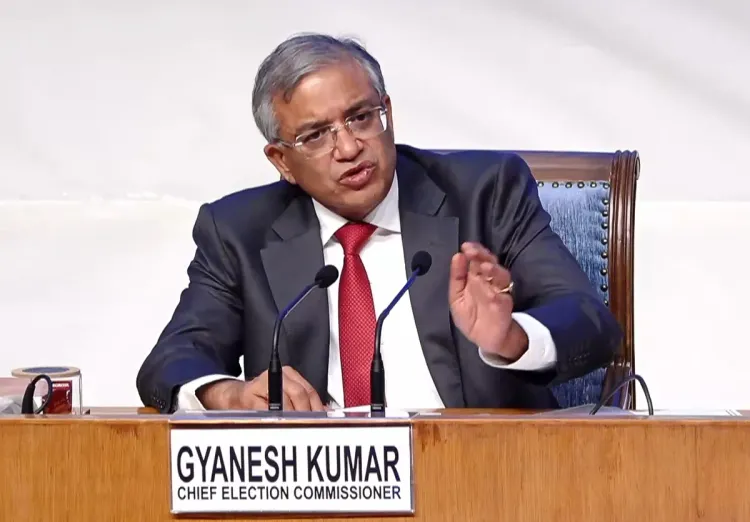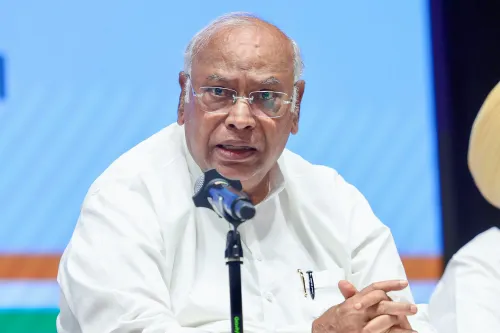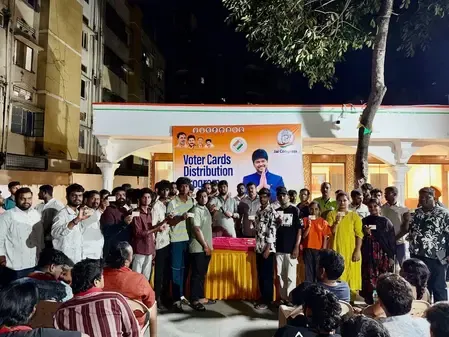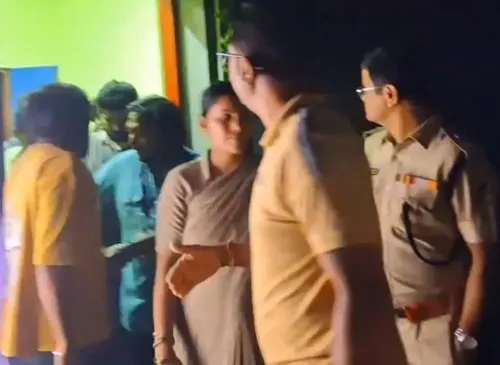Why is the Election Commission Reluctant to Share Machine-Readable Voter Lists?

Synopsis
Key Takeaways
- The ECI prioritizes protecting voter privacy.
- Machine-readable lists have been banned to prevent manipulation.
- Voter verification is accessible through the ECI website.
- Claims can be filed with supporting documents like Aadhaar.
- Transparency in the electoral process is a focus of the ECI.
New Delhi, Aug 17 (NationPress) Upholding its commitment to safeguarding voter privacy, the Election Commission of India (ECI) firmly declined to release the machine-readable voter list—a request persistently voiced by Congress leader Rahul Gandhi.
Chief Election Commissioner Gyanesh Kumar stated that the machine-readable voter list has been prohibited since the Supreme Court's 2019 ruling, due to the potential for manipulation of entries and photographs.
“Recent media reports have highlighted voter lists featuring elector images without their consent, which constitutes a violation of privacy,” he noted, emphasizing the obligation of the commission not to distribute images of mothers or sisters.
He clarified that the machine-readable voter list differs from the searchable voter list available on the ECI website, where individuals can input their information to verify their inclusion in the voter registry.
CEC Gyanesh Kumar reaffirmed that the ECI remains steadfast in its support for voters, ensuring that no eligible voter's name is removed, thus protecting their right to vote.
Within 56 hours of a Supreme Court directive, the ECI launched a website for each district in Bihar, enabling users to search for their names using their EPIC number.
Last week, the ECI accepted three significant recommendations from the Supreme Court regarding the Special Intensive Revision (SIR) of the electoral roll in Bihar, agreeing to include a list of voters who have not been added along with justifications in the draft roll.
To assist citizens, the ECI announced that, in addition to the list of deceased voters, voters in two locations and those who have permanently shifted, provided by BLOs to all political parties since July 20, a list of non-included voters with explanations will also be available in the draft roll.
This list of non-included voters can be searched booth-wise using the EPIC number on the websites of DEOs and the CEO.
The commission indicated that those who feel wronged can submit their claims along with a copy of their Aadhaar, which is a key suggestion from the apex court.
According to an ECI source, an aggrieved individual is defined as someone whose name is absent from the draft list (65 lakh), and they can only submit a claim in Form 6, which already includes a column for Aadhaar.
Previously, during a hearing, the apex court instructed the ECI to publish online the list of over 65 lakh voters proposed for deletion during the SIR.
However, citing field reports and official documentation, ECI representatives argue that the process has been significantly more transparent and collaborative than some opposition figures suggest.
The apex court's directives include uploading the comprehensive deletion list, providing reasons for each removal, permitting claims with Aadhaar for identification (not citizenship), and displaying these lists at Panchayat and BDO offices.









